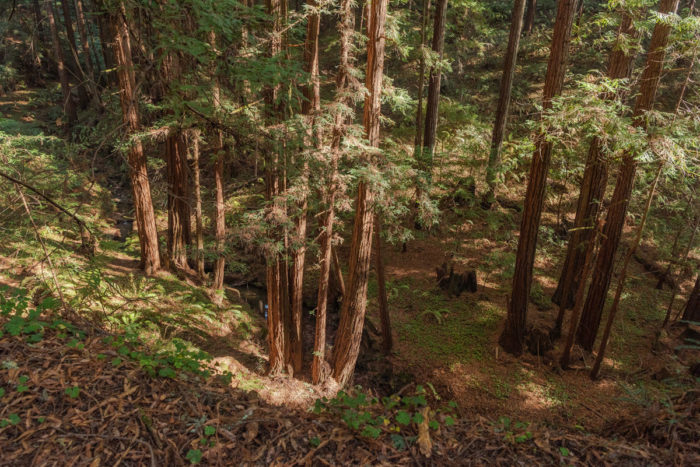Why is the Cascade Creek property so important to the League’s mission?
Cascade Creek supports both ancient redwoods and stands of large second-growth redwoods. It connects Big Basin Redwoods State Park with Año Nuevo State Park along the coast, increasing the ecological resilience of the entire region.
What are the terms and cost of the agreement?
The League purchased the property for $9 million, a figure considerably less than the market value. Our goal is to transfer it to a permanent steward, such as California State Parks. The landowners, Holmes family, have agreed to make a significant donation of land value to enable the League to purchase this property for approximately $1 million below fair market value.
The CZU Lightning Complex Fires burned much of the Cascade Creek property. Why is the League still buying it? Did the fire affect the value?
The Cascade Creek property remains a keystone redwood landscape linking the Santa Cruz Mountains to the Pacific Ocean, and so the League still believes this acquisition is a valuable long-term investment, especially knowing that the forest will recover in time. Our assessments indicate that the land and timber values have held, so the purchase price of $9 million (plus $600,000 for stewardship) remains the same.
Are the redwoods OK following the CZU Complex Fires? Will they grow back?
While this forest is resilient and will recover over time, there were effects of significant burning throughout the property. Many of the redwoods were at least top-killed. Many of them will resprout from the trunks and limbs, and most will sprout at least from the base. However, with the loss of ancient Douglas-fir trees, which do not sprout, the forest will look different, and Douglas-fir trees won’t be a component of the forest until new ones establish and grow.
Who are the owners of Cascade Creek, and what is their history?
The Holmes family has owned the property since 1978 and logged the lower part of the property in the 1980s. The family owned sawmills in Humboldt and Santa Cruz counties, milling second-growth and third-growth trees, while supporting the protection of old-growth redwoods. They have worked with the League on prior conservation agreements, most notably for properties in the Boulder Creek and Peters Creek watersheds.
What are the League’s plans for the property?
The League is prepared to hold the property for the foreseeable future until a permanent steward is secured. In the meantime, we now expect considerably more restoration and stewardship on the property than we had planned. We will take the least-intensive post-fire stewardship approach, focusing on natural recovery wherever possible. This means managing invasive species, monitoring natural regeneration of the forest, and planting on an enrichment basis where natural regeneration is not adequate.
How does Cascade Creek fit into the League’s Forever Forest Campaign?
Cascade Creek is one of the flagship projects of the Forever Forest Campaign. Securing this keystone landscape along the California Coast protects forests young and old, and safeguards a critical part of the coast redwoods’ natural range.
